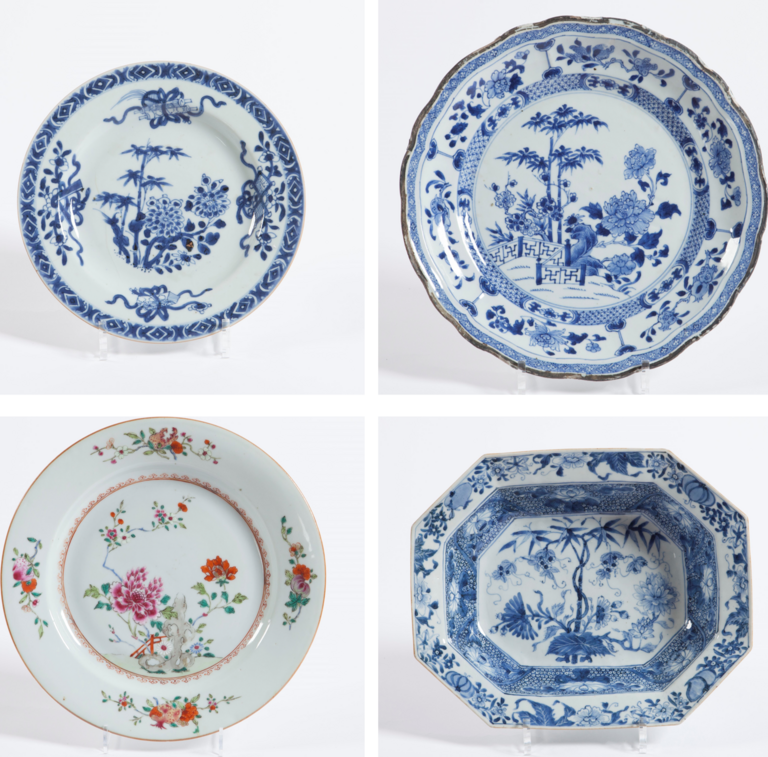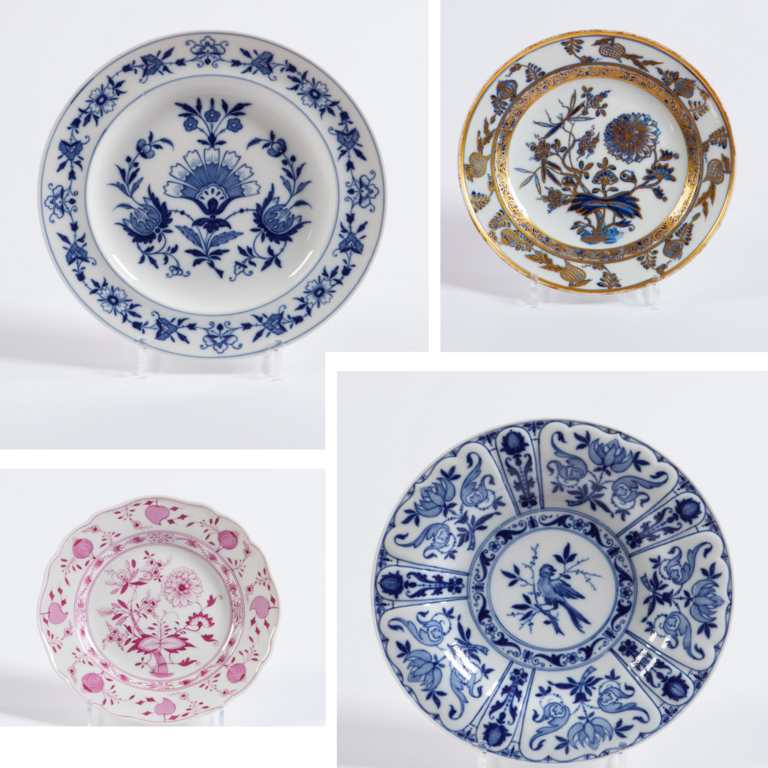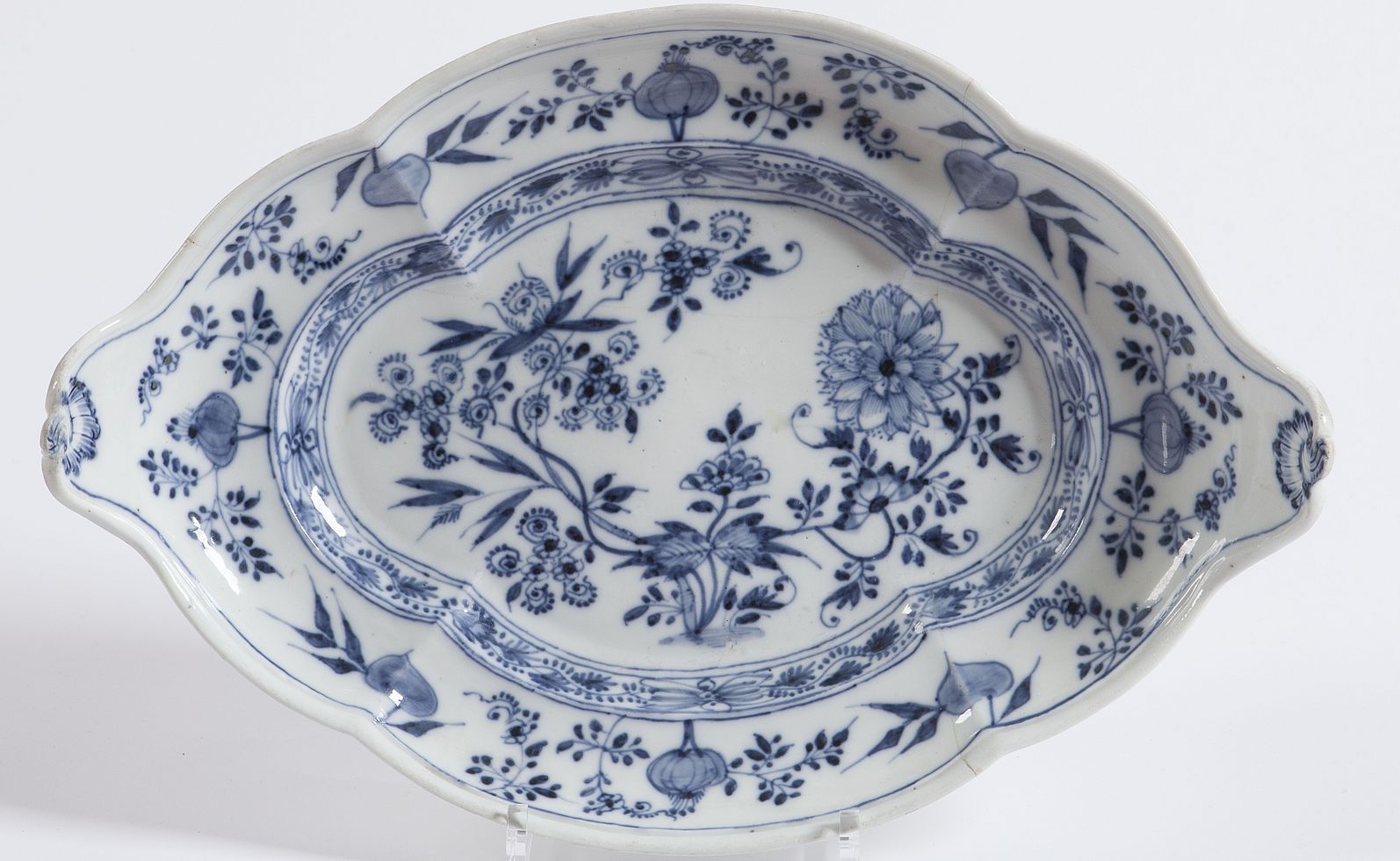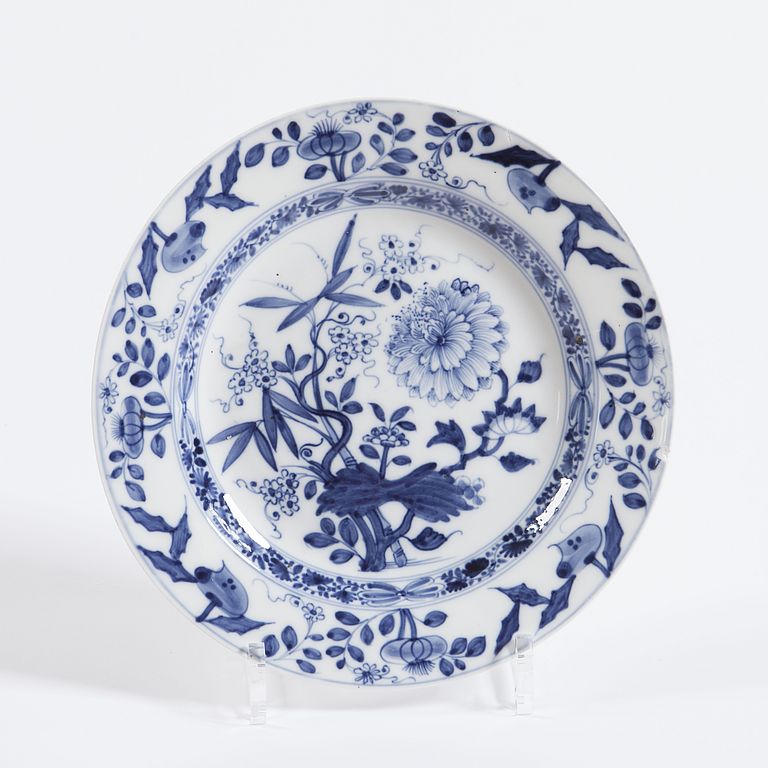Onion Pattern
Background
The Onion Pattern is the best known of any decorative scheme from the Meissen State Porcelain Manufactory. Conceived in around 1730, it was soon very much in demand amongst the buying public. Its popularity peaked in the 19th and early 20th centuries. It was long the domain of the blue-and-white shop and was catalogued under blau weiss ordinaire Porcelaine. The German term “Zwiebelmuster” was not widely adopted instead of “Blaue ordinäre Malerei” until after 1850. Associating the pattern with onions was a mistake first made by the blue-and-white painters of the time. What they took to be an onion next to the peach on the ledge of plates was in fact a Chinese melon.

Evolution
Given the general level of enthusiasm for East Asian art and culture, and most notably for porcelains from the region painted in blue, the Onion Pattern was perfectly in tune with prevailing tastes. The scheme comprises plants, flowers and fruit from China, specifically bamboo, chrysanthemum, peony and lotus flowers in the wells of plates plus pomegranates, melons, peaches and citrus fruit on their ledges. Various different combinations of fruit on the ledge are identifiable for the period 1730-1739. A growing tendency towards stylisation saw the pattern diverge from its original appearance to an ever-increasing degree. The standardised pattern still familiar to us today - the quadruple alternation of two types of fruit (peach and onion-shaped melon) - emerged in around 1770.

Prototypes
Exactly when the Onion Pattern came into being was long the subject of hot debate amongst scholars. It is now generally agreed that the first versions date back to around 1730. Recent research indicates that the Onion Pattern did not replicate anything in Augustus the Strong’s voluminous collection of porcelain. Meissen’s blue-and-white painters were evidently stimulated by features on both Chinese porcelain and faience ware and that they modified these as they thought fit.
Further development
The neo-Classicist approach that held sway in around 1800 caused blue-and-white to fall from favour at Meissen and sales of such ware to dwindle. Interest in the Onion Pattern revived in around 1830 and a new era commenced. An Onion Pattern boom was triggered that lasted until early in the 20th century. New blue-and-white patterns were developed in the late 19th century as a means of gaining new categories of buyer and profiting from the success of the blue-and-white Onion Pattern. Carl Ludwig Theodor Graff, Vice-Chancellor of Dresden’s Royal College of Applied Arts, for instance, came up with a new blue-and-white scheme in 1879. A blue-and-white “Fan Pattern” with echoes of the Onion Pattern likewise emerged that year. Painters experimented with underglaze blue, high-fire blue, royal blue and overglaze colours. Ludwig Philipp Georg Sturm, for instance, evolved a technique of painting gold and platinum on a royal blue ground with a view to decorating monumental vases. Eduard Braunsdorf worked with varying nuanced shades of blue in his monochrome flower painting. Underglaze-blue schemes, the classic Onion Pattern and elements thereof in subsequent patterns are all still to be found in the portfolio of the Meissen State Porcelain Manufactory.


